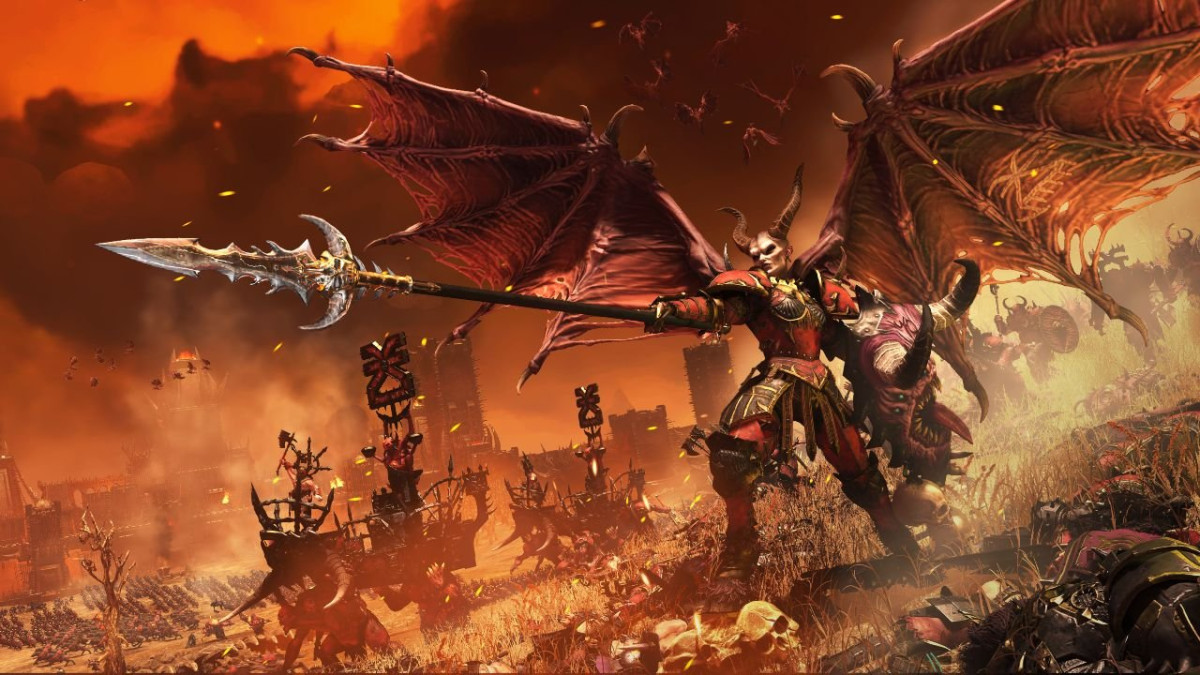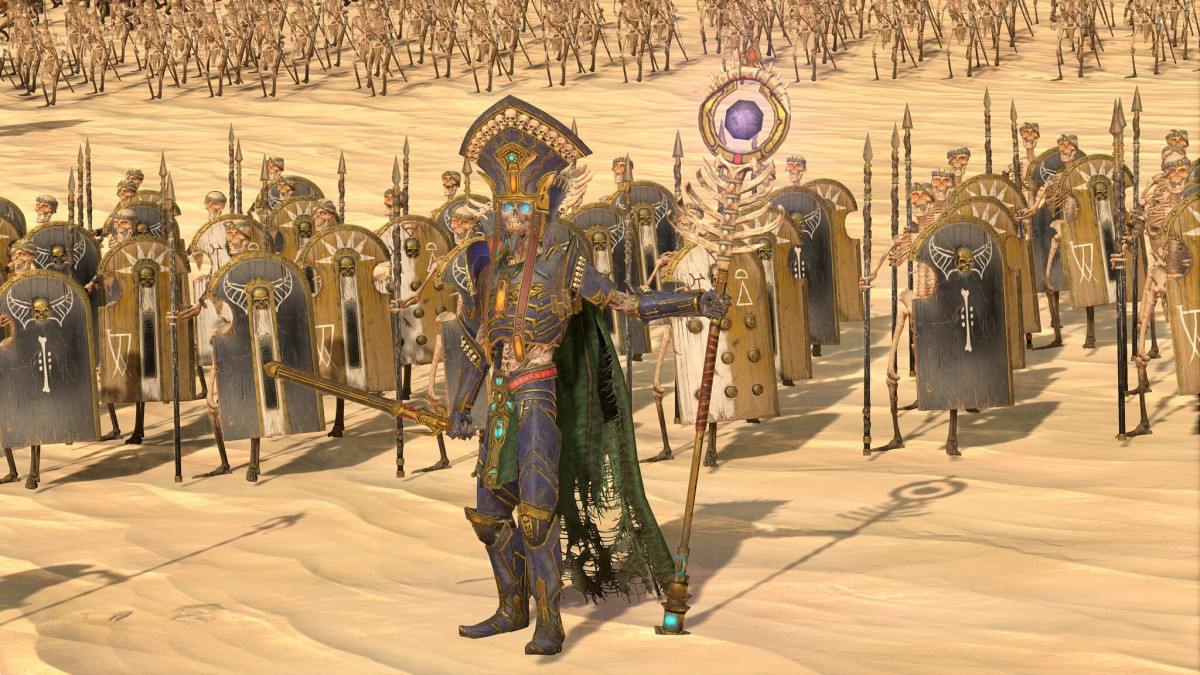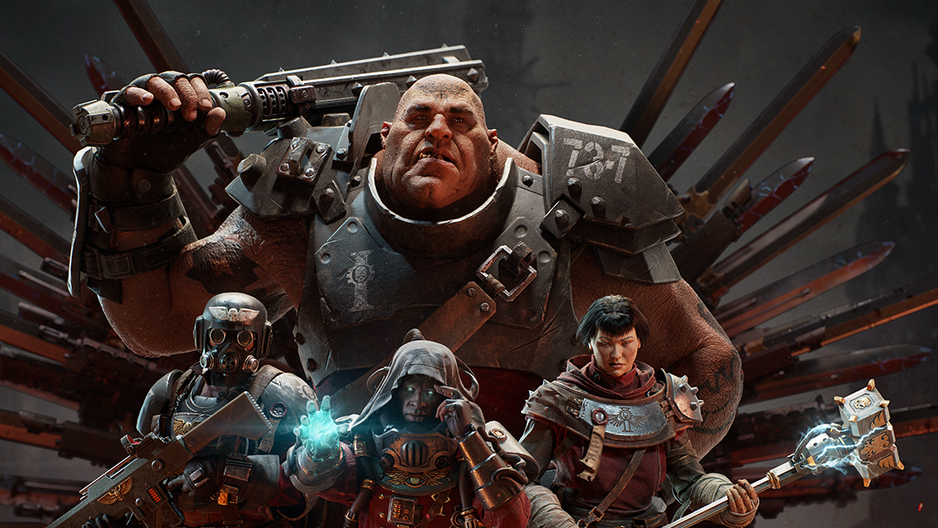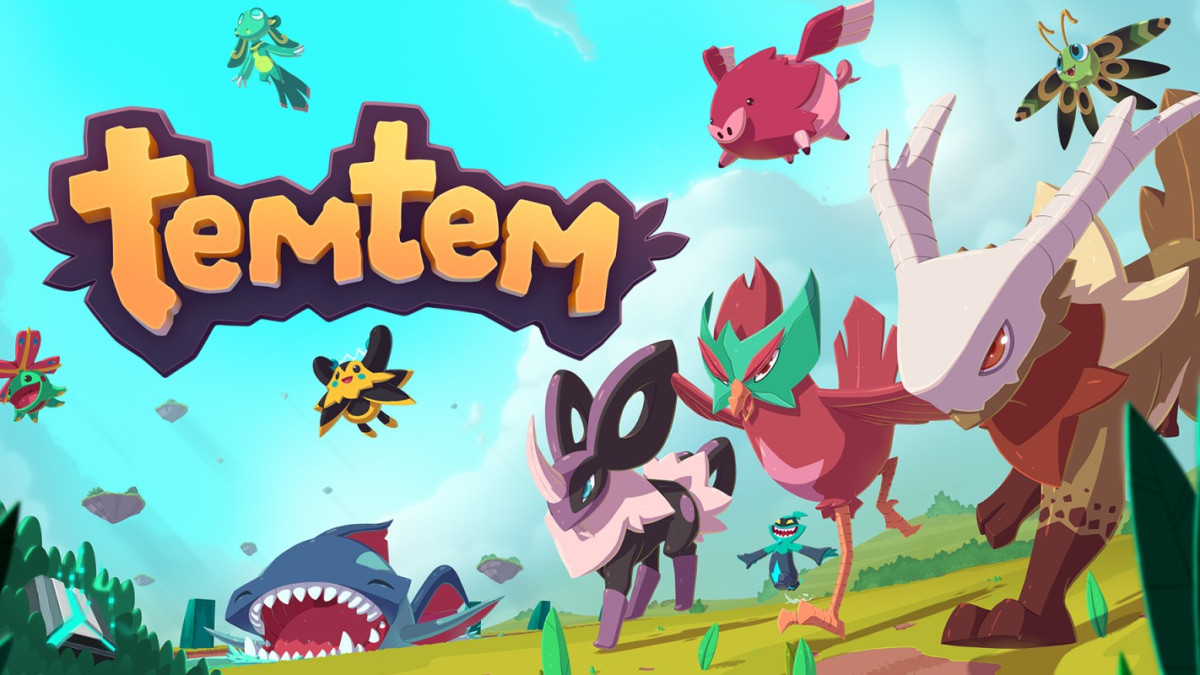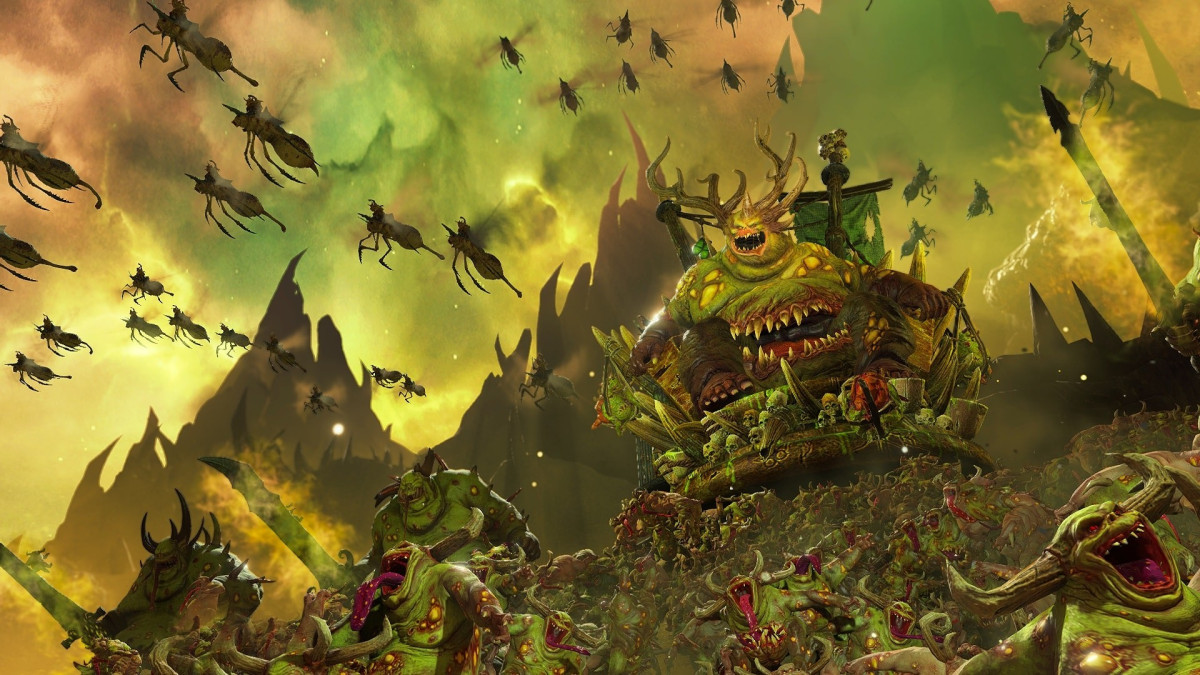
Warhammer III Damage Types and Resistances Explained
Table of Contents
Something that you have probably noticed in Total War: Warhammer III is the range of different damage types in the game, such as physical damage, magical damage, fire damage and more. While there are some tooltips in the game that explain what all of these damage types mean, it can become a little bit confusing to understand exactly how they all work and interact with the different types of resistances in the game.
This guide will explain the different damage types (and status effects) that are in Warhammer 3.
Damage Types vs Status Effects in Warhammer III
The first thing that's important to understand here is the difference between damage types and status effects. For example, most of Nurgle's units say that they do poison damage - is this a type of magical damage? The answer is no.
There are only three damage types in Warhammer III - Physical, Magical and Fire. Everything else, such as poison damage, is actually a status effect that operates independently of damage types - you can have poison damage that is also physical, magical or even poison fire in some rare cases.
Next we will explain exactly how physical, magical and fire damage works.

The Three Damage Types in Warhammer III
As mentioned above, damage in Warhammer III is split into three different types - magical, physical and fire. Physical and Magical damage are the easiest to understand.
Physical Damage
The default damage type in Warhammer III is physical damage - if magic or fire damage are not specified on a unit card, then the unit is going to do physical damage unless imbued with an effect that changes that during the course of battle. This means that it is by far the most common damage type, and having physical resistance in your army will almost always be helpful. We'll talk a bit more about resistances later.
Magical Damage
Any unit that says that it has "magical attacks" in its unit stats will deal magical damage instead of physical damage. This is quite valuable in Warhammer III, as there are less ways to resist magical damage.
Most offensive spells also do magical damage.
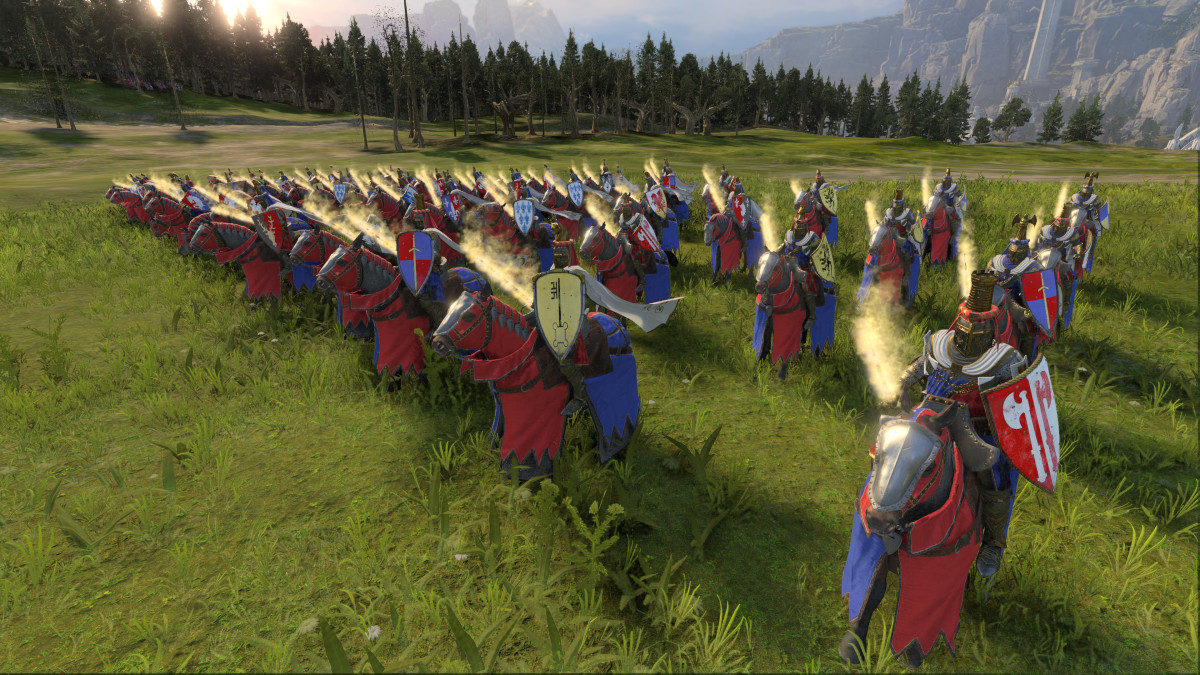
Fire Damage
Similarly, any unit that has the Fire Damage (also called Flaming Attacks) icon in its unit card will deal fire damage. However this damage type is a bit more confusing than the other two, since it's not really an independent damage type in of itself.
Fire damage behaves more like an additional categorization of either physical or magical damage - you can have physical fire damage or magical fire damage. If the unit card only says fire damage, then you are dealing with physical fire damage, whereas if it has both the magical damage and fire damage icons, then it is magical fire damage.
This becomes important to understand if you want to know how resistances work in the game, and we will talk more about those next.
How do Resistances Work in Warhammer III?
This is probably the most complicated part of this guide, so we'll try to keep it as simple as possible.
Warhammer III contains the following types of resistance:
Physical Resistance
This is a resistance type that will cause the unit or character to resist a percentage of any incoming damage that is of the physical type. This includes physical fire damage and physical missile damage.
Spell Resistance
Back in Warhammer II, this was called Magical Resistance, and it caused units to resist all forms of magical damage, including units that had magic attacks and enemy spells.
For Warhammer III however they renamed it and changed how it worked. Spell resistance now only reduces the damage a unit takes from enemy spells, it will do nothing against melee or missile damage from units with magical attacks.
Missile Resistance
Missile resistance will let a unit or character resist all projectiles coming from other units, regardless of which damage type the projectiles they fall under. So if you have 20% missile resistance on a unit, they will take 20% less damage from both archers dealing normal physical damage, as well as Pink Horrors of Tzeench firing their magical projectiles.
Note that while there is Missile resistance in Warhammer III, there is no such thing as melee resistance.
Fire Resistance (or weakness)
Fire is the only damage type where it is possible for units to have a negative resistance, or a weakness to it. This is common with units that have the Regeneration ability, which comes with a 20% fire weakness wherever it is found.
Fire resistant units will take less damage from both physical fire and magical fire attacks, regardless of whether the damage is melee or missile. The same thing applies in reverse if the unit has fire weakness.
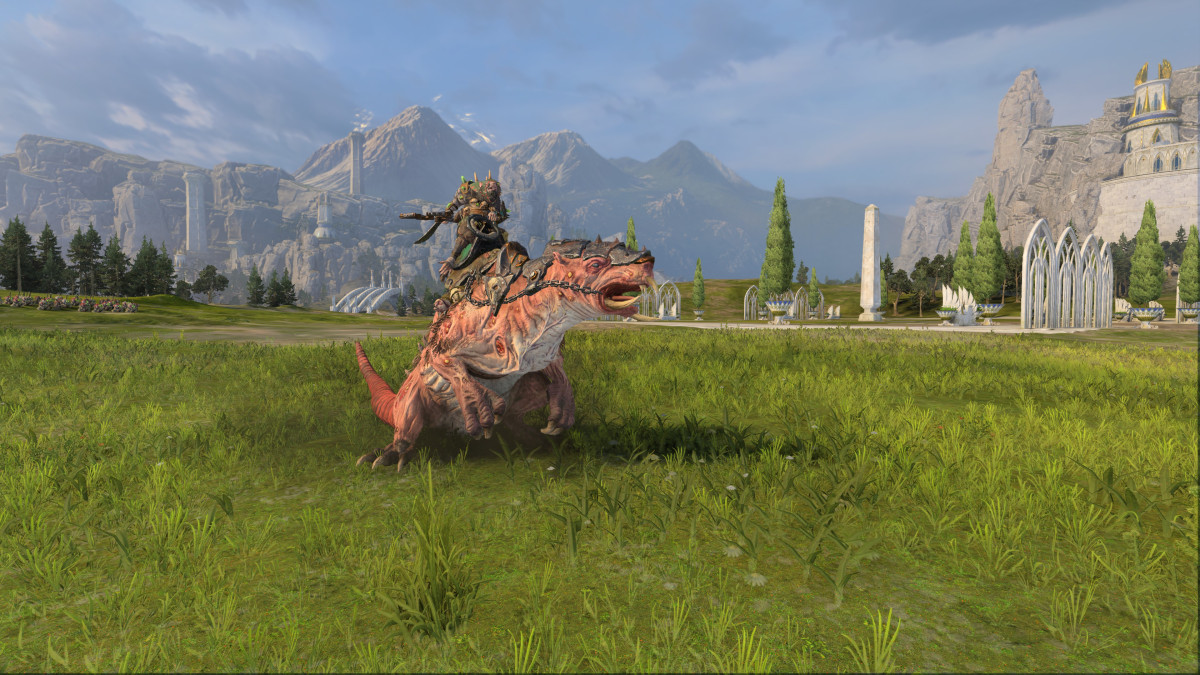
Ward Save
Ward Save is the most powerful type of resistance in Warhammer III. It effectively allows you to resist all damage types, with no questions asked. There is no way a unit can bypass Ward Save.
How Final Resistances are Calculated in Warhammer III
With all of that information about the different types of resistances out of the way, we can touch upon exactly how the game will calculate a unit's resistances if the unit has several of them.
For example, if a unit of High Elven Dragon Princes takes a volley of arrows from Bretonnian Peasant Bowmen (Fire Arrows), what would happen exactly?
The Peasant Bowmen (Fire Arrows) are marked with Flaming Attacks, but not Magical Attacks so they are dishing out physical fire damage.
Dragon Princes come with 20% Physical Resistance and 40% Fire Resistance. In Warhammer III, resistances are calculated additively, so the physical and fire resistances in this case will simply add up to a total of 60% resistance against any flaming arrows that hit the unit.
You can also see how in some cases like this, having fire damage can actually be a disadvantage, because if the archers were just firing normal arrows, only 20% of their damage would be getting blocked, rather than 40%. It really just depends on the matchup - fire damage is not always better.
Please note that there is a cap to how high resistances can go, no matter how high you manage to stack them, they will cap at 90% - so you will always receive at bare minimum 10% of the original damage value from any attacks that successfully hit your unit.
Status Effects in Warhammer III
The final thing to cover here is status effects, also called contact effects. These are additional effects that can be seen next to the melee attack or missile strength values on a unit card, and will basically put some kind of debuff on any units that they hit.
These operate completely independently from damage types and do not interact with them in any way, other than in some cases afflicting the target with a vulnerability to subsequent attacks of a particular type.
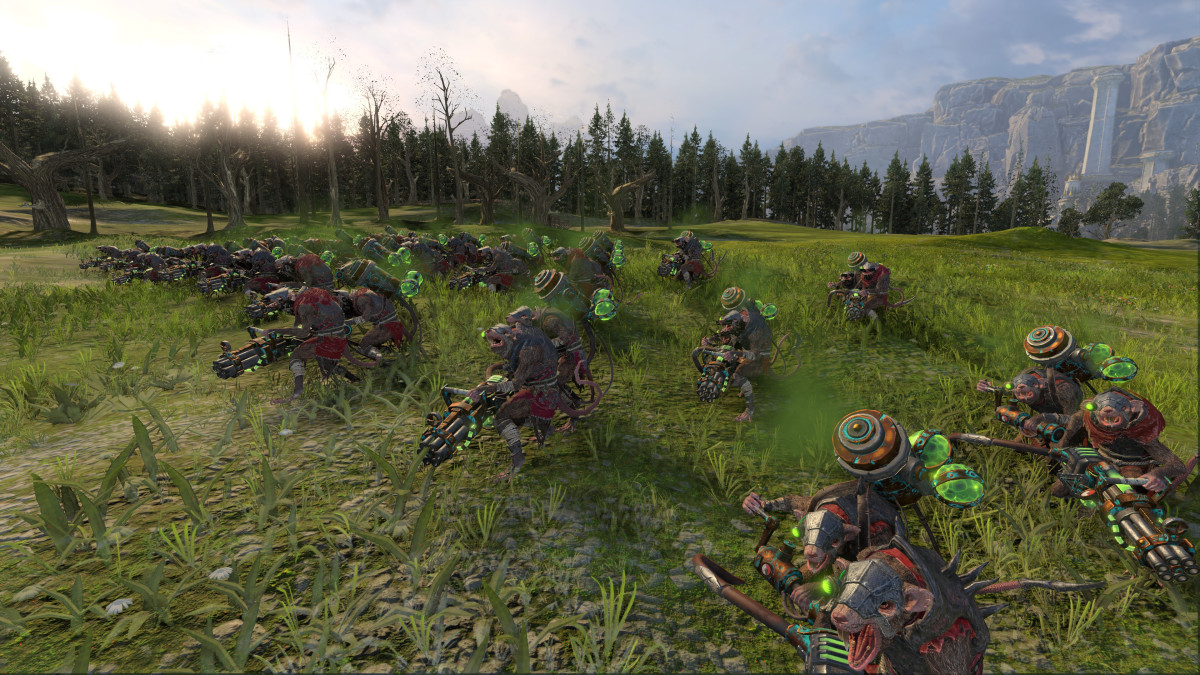
Below is a list of all status effects in Warhammer III, along with a short description.
Dazed
The target is dazed, which reduces their melee defence by 10 and their speed by 25%.
Poison
Perhaps contrary to expectation, this is not a damage type and will not cause targets to take additional damage over time. It will however give them a pretty nasty debuff, reducing their speed, weapon damage and missile damage by 15%.
This debuff is great for slowing down engagements and buying your army extra time to dish out damage.
Sundered Armor
Any unit afflicted with Sundered Armor will have its total armor amount reduced by 30 until the debuff expires. Note that this cannot result in negative armor values, armor cannot drop below zero.
Madness of Khaine
This debuff comes from a special poison used by some Dark Elf units, such as Witch Elves. It reduces speed by 20%, melee defence by 10% and causes the unit to go on a rampage, becoming impossible to control or command for a time.
Frostbite
Units from very cold climes and spectral units commonly dish out this contact effect, which reduces speed by 30%.
Shieldbreaker
A useful debuff that some ranged units will inflict on victims. Reduces missile block chance by 24.
Contaminated!
Units from races that deal in deadly plagues might have this status effect imbued in their attacks. This debuff reduces leadership by 10 for the duration.
Weeping Blade
Against high-armor units, this is a stronger version of Sundered Armor. Against low armor units it's probably a little weaker. It reduces the armor value of the target by 50% for the duration of the debuff.
Zzzzap!
A rare contact effect only sourced from a couple of Skaven units. When a unit or character is hit by this debuff, it will increase their ability cooldowns by 10 seconds.
Suppressed
This is found on a few units with powerful gunnery, such as the Ratling Guns and the Gyrobomber. It reduces the speed of units by 30%. You can make your Ratling Guns especially good at slowing enemy units down by also getting a Plague Priest hero to cast the Bless With Filth spell on them, imbuing poison and causing them to reduce enemy speed by a total of 45%.
Poisoned Wind
Another Skaven-only effect. This one comes from the Poison Wind Globadiers and Poison Wind Mortars. Units damaged by projectiles from these units will receive additional damage over time.
Warpflame
A debuff dished out by some of Tzeench's units, Warpflame adds 10% fire weakness and removes 10 armor.
Soporific Musk
A debuff unique to some Slaanesh units, Soporific Musk reduces both Melee Attack and Melee Defence by 5.
Discouraged
A pretty powerful status effect if you're trying to get units to flee more quickly, Discouraged reduces enemy leadership by 16.
Burnt!
Some units and spells that deal fire damage will also apply Burnt to the target, reducing their Leadership by 8.
Blinded!
Reduces melee attack and defence by 24, and ranged accuracy by 30.
Charmed!
Reduces the melee attack of afflicted units by 8.
Euphoric!
Causes the victim to go on a rampage, becoming impossible to control or command.
Disrupted!
Increases Miscast chance by 100% (only relevant for a spellcaster lord or hero who is trying to overcast a spell) and reduces physical resistance by 10%.
Dampen
Some Wood Elf units can dish out this debuff, decreasing enemy spell resistance by 20%.
Flammable
A debuff that can be found in the High Elf roster, Flammable increases an enemy's fire weakness by 20%.
Skarsnik's Death Juice
A debuff unique to Skarsnik's Crooked Moon faction, only found in campaign mode (not custom battles), obtained via the Scrap system. Deals some damage over time and also applies the same debuff as the Poisoned effect, with -15% Speed, Missile Damage and Weapon Damage.
And that is all of the status effects in Warhammer III. It certainly isn't necessary to memorize all of these, but hopefully this page can serve as a useful reference.
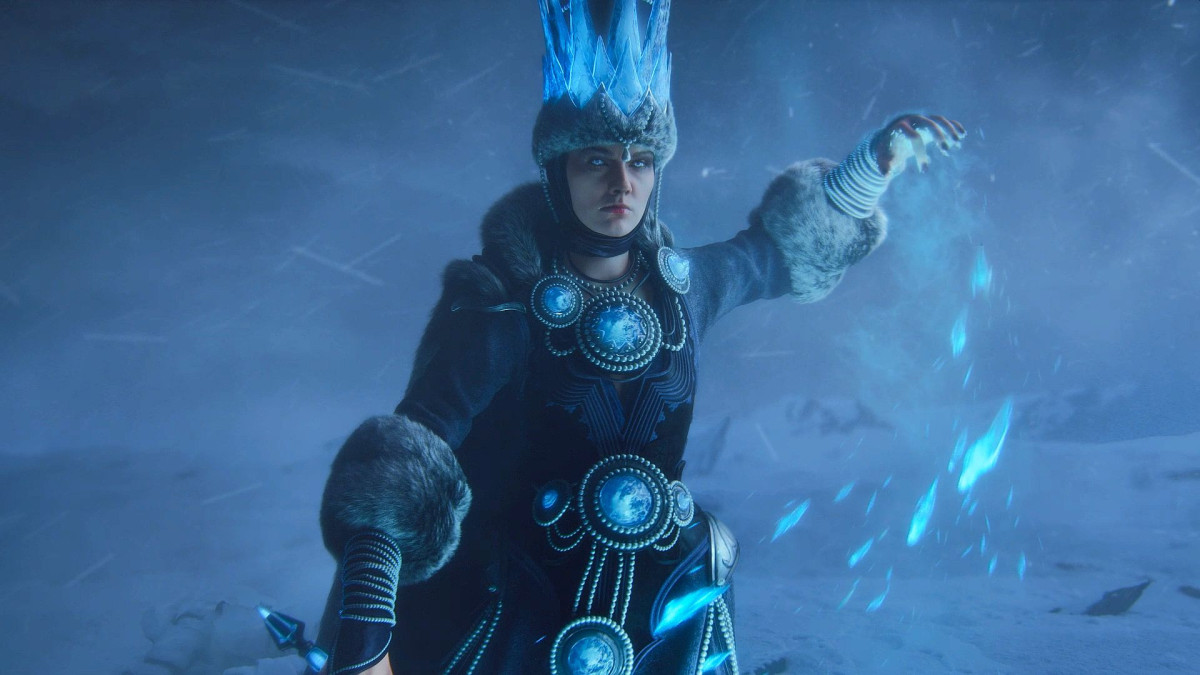
That's the end of this guide about damage types, resistances and status effects in Total War: Warhammer III. Warhammer 3 is developed by Creative Assembly.
